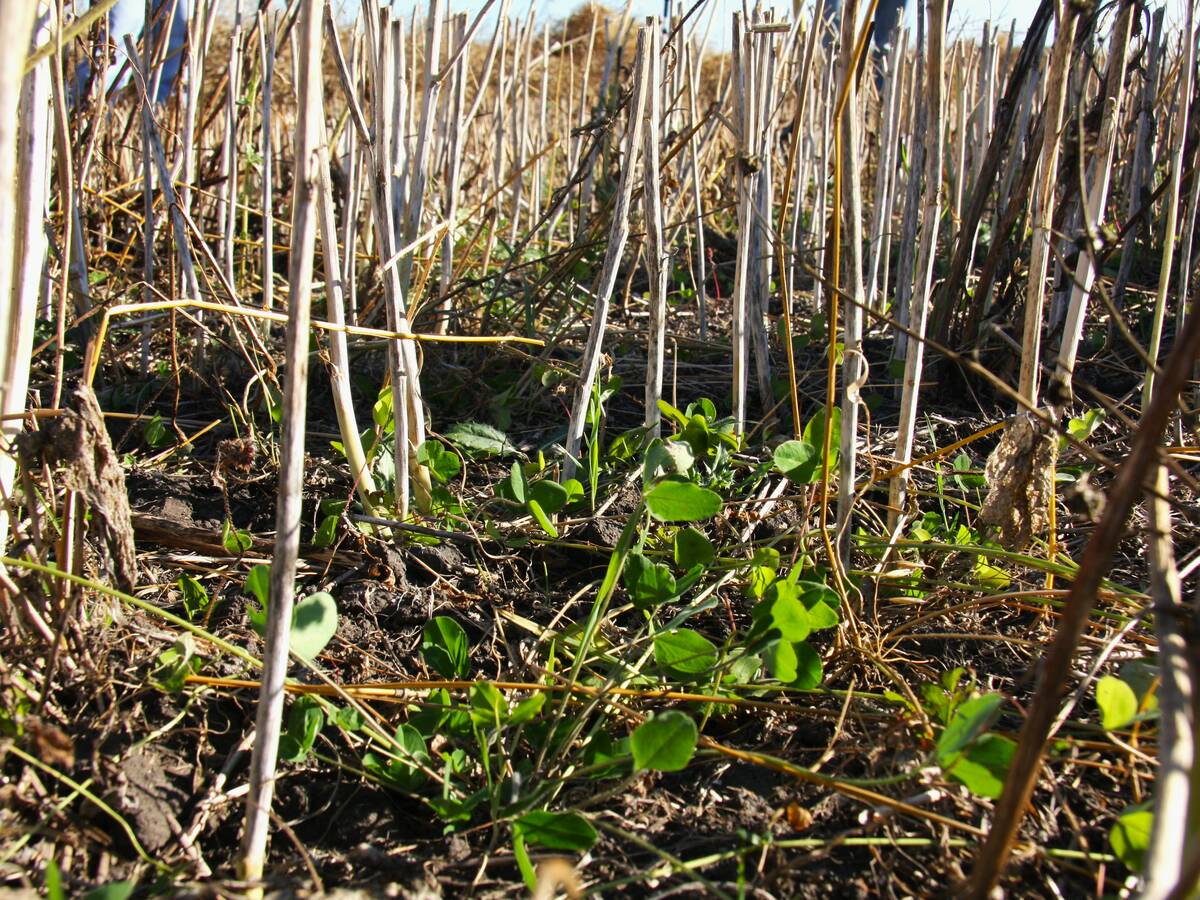Grasshoppers might be a problem in some parts of the Prairies this year.
However, whether they become a financial issue on the farm will likely have more to do with spring weather than current forecasts.
Previous seasons have had cool springs and May rain, both of which impede grasshopper development and give crops a head start.
Last fall’s late frosts and warm temperatures until Halloween meant some species were still laying eggs until snow arrived in early November. Other species may have slowed their egg laying behaviour, but those too were likely still making plans for a big spring hatch.
Read Also

Saskatchewan project sees intercrop, cover crop benefit
An Indigenous-led Living Lab has been researching regenerative techniques is encouraging producers to consider incorporating intercrops and cover crops with their rotations.
Scott Hartley of Saskatchewan Agriculture said the projected population maps that have been issued in the past week from all three prairie provinces indicate isolated potential threats, but spring conditions could produce problems in many more areas.
“If we have a more typical drier, warmer, earlier spring, if that is still typical, then we will see higher populations in many areas,” he said.
Surveys of 1,100 sites in Saskatchewan showed that the northwest has a pocket that could be a problem, near Meadow Lake and Goodsoil.
The southwest near Swift Current could also have near threshold conditions for lentil crops.
There is potential for light infestations south of Regina and in the area northwest of Estevan in southeastern Saskatchewan. More vulnerable crops or those late to emerge should be monitored.
“It always depends on weather and (hatch) timing and the progress of the crop,” Hartley said.
In Manitoba, John Gavloski said a trend has developed over the past few years for higher grasshopper numbers. The overall threat in Manitoba is low, but there are pockets where the four main pest species could create significant risks to crops.
Potentially threatening populations exist north of Winnipeg and in the southwest from Melita to Neepawa and from Crystal City to Carberry.
There are also potentially problematic zones in Alberta’s Peace country and areas north of Lloydminster, east of Red Deer and south of Calgary.
Hartley said areas that were green last fall and providing habitat for the insects could potentially harbour higher egg populations.
“Some fields and pastures probably tend to have higher populations in years when grasshoppers have been a problem,” he said.
“Look to those areas first when scouting in the spring.”
He said producers should be vigilant when crops are at a vulnerable stage, even if their farms are in low threat areas.














